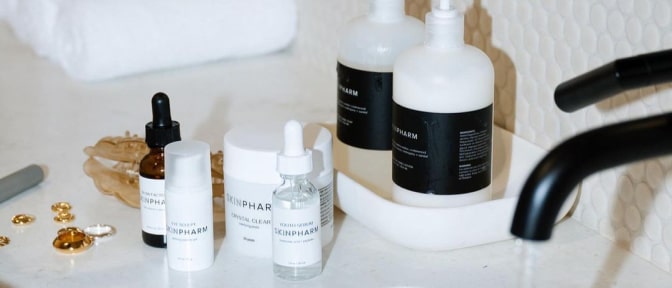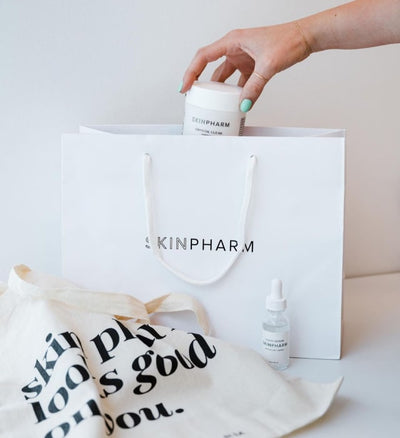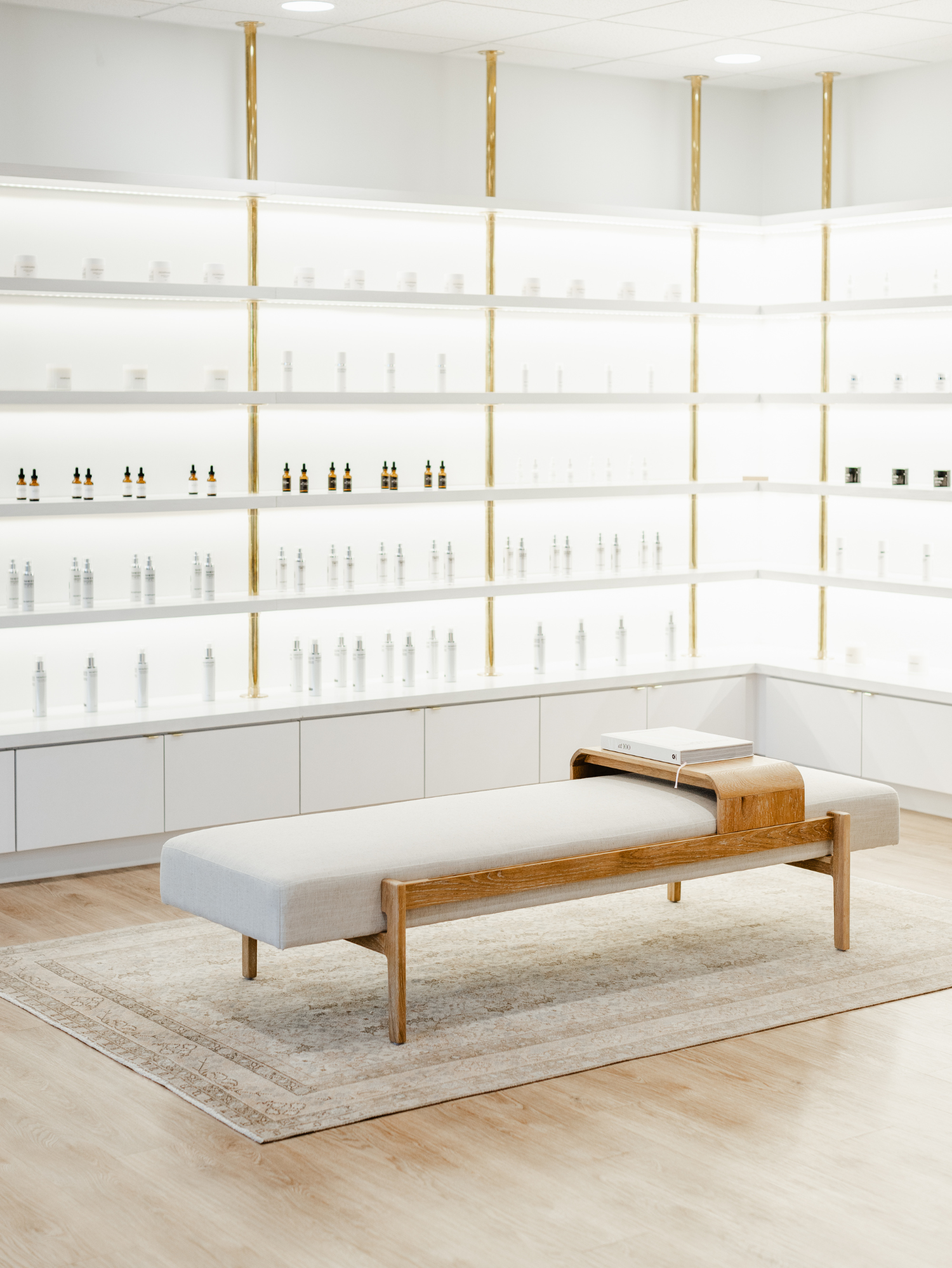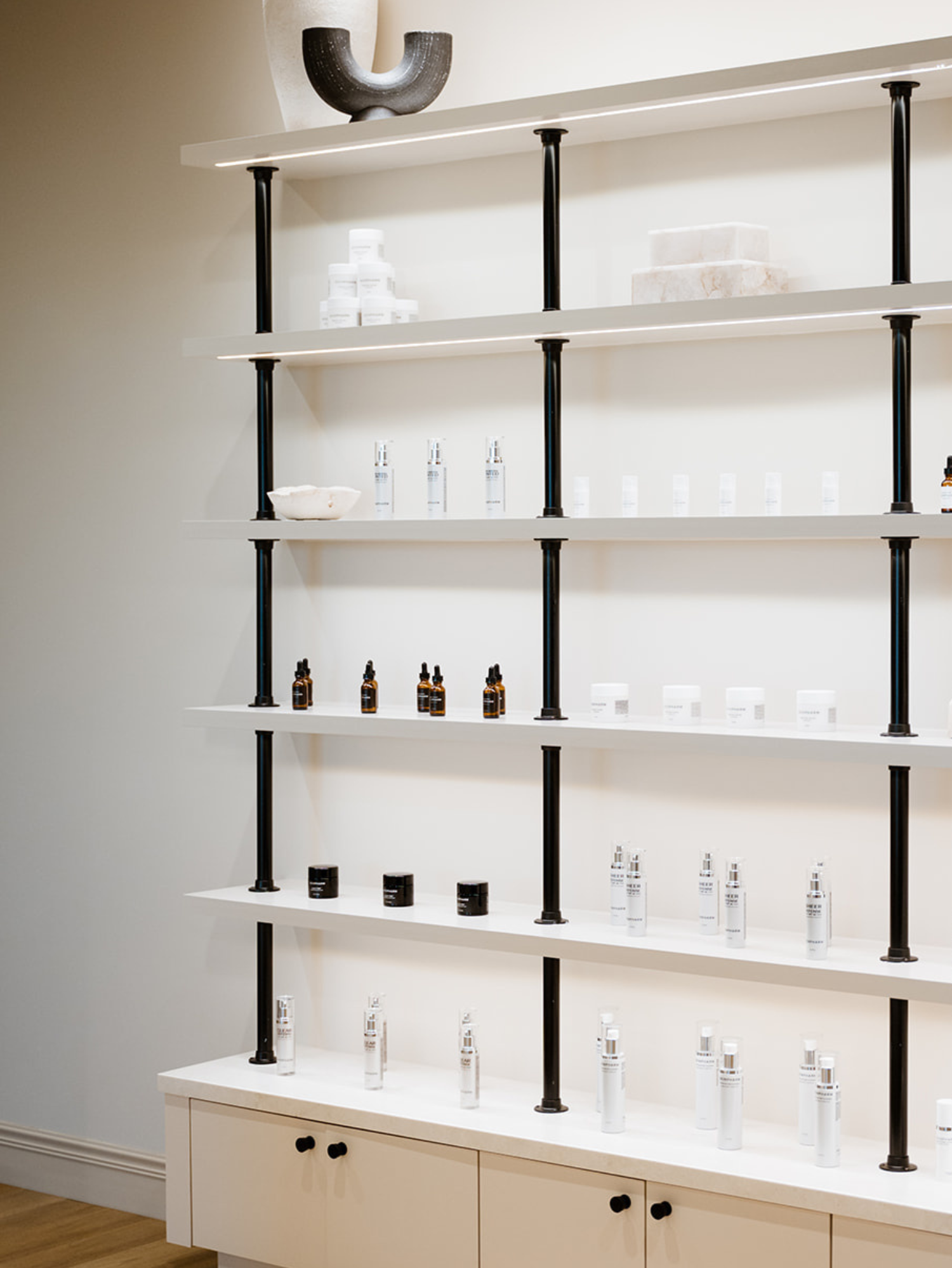Shop skin care
Clinics
VISIT OUR 9 CLINICS →
HOURS
Monday – Friday
9:30a – 5:30p
Can Hyaluronic Acid + Retinol Be Used Together?

Hyaluronic acid and retinol are often considered to be standard gold ingredients in the skin care industry.
However, with so many ingredients potentially clashing with each other or making the other less effective, many people wonder which can be safely used together.
To help, we're going into detail about whether or not hyaluronic acid and retinol can be combined and how you can most effectively do it. After all, you deserve to truly love the skin you’re in – and Skin Pharm is here to help you do that!
What's hyaluronic acid?
Hyaluronic acid is a skin care ingredient known for its ability to hold moisture inside the skin. It’s considered an emollient, meaning that it keeps moisture and draws it into the skin, as well.
Hydration is one of the most important factors to focus on in any skin care routine. Without proper moisture, your skin is prone to developing all sorts of different issues that can impact your appearance. Most of those issues come down to dehydration and the way that your skin’s moisture barrier responds to it.
Hyaluronic acid can help prevent that from happening. Not only can it hold a reported 1000x its own body weight, but it also helps protect the skin’s ability to defend itself. (It's so effective because it's produced naturally by the body.)
Inside the body, hyaluronic acid helps both retain moisture and lubricate. That’s why so much of it is found in just a few places in the body – the majority in the skin and the rest mostly in connective tissue, joints and the eyes.
Unfortunately, as we age, our natural production of hyaluronic acid starts to decline. With less of it in the body, we need to counter it by using an outside source. Otherwise, the lack of hydration can lead to the appearance of fine lines and wrinkles.
What about retinol?
While hyaluronic acid hydrates the skin, retinol helps it be able to refresh itself more rapidly.
Retinol is a derivative of vitamin A, a fat-soluble vitamin that is considered essential to the health and function of the body. It helps with vision and cell reproduction, among other things.
Vitamin A’s impact on cell reproduction is part of what makes it such a fantastic skin care ingredient. It helps to “trick” the skin into speeding up the pace of turning over the skin cells. The end result of all of that skin rejuvenation is a visible reduction in the appearance of fine lines and wrinkles.
The best part about retinol is that there isn't an age at which its benefits stop! Even studies done on older adults have shown this skin care ingredient to be beneficial.
Retinol can also be effective at helping control the amount and severity of blemishes. Its exfoliating properties not only encourage quicker skin cell turnover, but they also help to keep the pores open. This decreases the likelihood that those pores become clogged.
Can hyaluronic acid and retinol be used together?
Unlike many other skin care ingredients out there, hyaluronic acid and retinol can be used in the same skincare routine.
Not only that, but using them together can help to lessen the severity of the side effects that often come with retinol usage. Due to how retinol impacts the skin (which is also why it is so effective), it can cause significant irritation.
This is especially true for people with more naturally sensitive skin – side effects include potential dryness, sensitivity, peeling and flaking.
While most of those issues resolve on their own as your skin starts adjusting to treatment, it can be initially difficult (and even embarrassing) to deal with. Anything that can minimize that adjustment period can be a massive benefit, encouraging your skin to get back to normal as quickly as possible.
However, knowing how to combine hyaluronic acid and retinol for optimal benefit is key! Otherwise, you risk losing the effectiveness of either product.
Okay, so how should I combine hyaluronic acid and retinol?
So we know that hyaluronic acid and retinol make a great team, but what's the best way to combine them to get the most benefit out of both?
First of all, it’s a good rule of thumb to apply your retinol first. This allows it to sink more deeply into the pores to be at its most effective. Here is a recommended starter routine for combining both hyaluronic acid and retinol.
STEP 1: WASH YOUR FACE
You’ll always want to start with cleansing your face thoroughly. It’s important to make sure that you remove all of the dirt, debris, and environmental buildup from your skin, so there isn’t a barrier between your skincare products and your pores.
Choose a cleanser that works well with your specific skin type, and gentler is better. You should also use warm water instead of too hot or too cold water because either of those options can damage your skin.
STEP 2: DRY OFF YOUR SKIN
Once your skin has been cleansed, pat your skin dry instead of rubbing it. It can be tempting to rub your skin, but try to avoid it.
Rubbing the skin can lead to irritation and increased susceptibility to blemishes and other skin-related concerns. You’ll also want to always use a clean towel so that there is less potential for bacteria to cause problems on your skin.
STEP 3: APPLY YOUR RETINOL
When it’s time to apply your retinol, make sure that your face is completely dry. Wet skin can increase the potency of retinol in a bad way, increasing the likelihood of irritation or other related side effects.
Use just your fingertips to apply your retinol, and gently pat or dab it into your skin. Focus especially on the areas that are showing the most visible signs of aging. Allows at least a few minutes after application before moving on to the next step so that the retinol has plenty of time to absorb.
STEP 4: APPLY YOUR HYALURONIC ACID
Once your retinol is absorbed, it’s time for the next step.
No matter which form you choose to incorporate your hyaluronic acid, it should be close to the final step in your routine. If you are using it in serum form, you’ll apply it immediately after your retinol. If it is part of your moisturizer, it will be your last step.
That allows it to truly harness its power as an emollient and seal in both your other products and moisture. This final push of hydration keeps your skin resilient and helps you look your best.
Which skin care products use hyaluronic acid and retinol?
While we ran through a basic skin care routine that uses both hyaluronic acid and retinol, you may be wondering what types of products you can use in it.
HYALURONIC ACID SKIN CARE:
When it comes to hyaluronic acid, the sky's the limit.
At Skin Pharm, our favorite hyaluronic acid is Youth Serum. This anti-aging serum is a real multitasker. It transforms dull, dry skin into skin that's more plump, firm and radiant.
Also, it includes multi-molecular weight hyaluronic acid, peptides, green tea extract, vitamin B5 and niacinamide – a whole host of good-for-you ingredients!
RETINOL SKIN CARE:
When it comes to retinol, Skin Pharm has an option for that, as well. In nearly every case, retinol products come in serum form. This helps to keep them stabilized while still giving you all of their impressive, proven benefits.
Night Watch gentle retinol drops were designed to supercharge your skin while you sleep. It contains 0.2% pure retinol to resurface your face, as well as bisabolol and vitamin C to soothe and brighten. This serum is great for all skin types, as well as anyone concerned about aging skin.
To wrap things up...
Using hyaluronic acid can help reduce the potential irritation that can come with retinol usage. That way, you can enjoy all of the benefits of both products without as many of the side effects.
The result is dewy, radiant, more youthful-looking skin. Skin Pharm has products focusing on hyaluronic acid and retinol so that you can get all of your products from the same, trusted place. It’s just one more way that Skin Pharm is here for you.
SOURCES:
Perspectives in the selection of hyaluronic acid fillers for facial wrinkles and aging skin | PubMed
Improvement of naturally aged skin with vitamin A (retinol) | PubMed (nih.gov)
A comparative study of the effects of retinol and retinoic acid on histological, molecular, and clinical properties of human skin | PubMed (nih.gov)
















